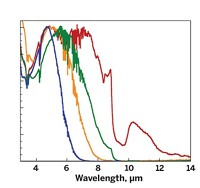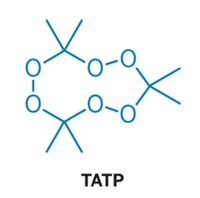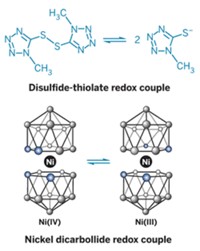Advertisement
Grab your lab coat. Let's get started
Welcome!
Welcome!
Create an account below to get 6 C&EN articles per month, receive newsletters and more - all free.
It seems this is your first time logging in online. Please enter the following information to continue.
As an ACS member you automatically get access to this site. All we need is few more details to create your reading experience.
Not you? Sign in with a different account.
Not you? Sign in with a different account.
ERROR 1
ERROR 1
ERROR 2
ERROR 2
ERROR 2
ERROR 2
ERROR 2
Password and Confirm password must match.
If you have an ACS member number, please enter it here so we can link this account to your membership. (optional)
ERROR 2
ACS values your privacy. By submitting your information, you are gaining access to C&EN and subscribing to our weekly newsletter. We use the information you provide to make your reading experience better, and we will never sell your data to third party members.
Analytical Chemistry
A Zinc Sensor For High Explosives
Direct fluorescence method selectively detects RDX and PETN
by Rachel Petkewich
May 21, 2007

Practical detection of two commonly used explosives may be closer at hand now that the first direct fluorescence sensor for RDX and PETN has been reported. Chemists Trisha L. Andrew and Timothy M. Swager at Massachusetts Institute of Technology developed the device (J. Am. Chem. Soc., DOI: 10.1021/ja071911c).
Explosive devices hidden in war zones and transportation hubs continue to raise concerns, spurring researchers to improve methods for detecting them. Many current detection methods rely on instrumental techniques such as ion-mobility spectrometry, gas chromatography, and mass spectrometry, and they can be a challenge to deploy in the field. The new sensor could lead to more compact and inexpensive detection devices, says Bruce McCord, an associate professor of analytical and forensic chemistry at Florida International University, in Miami.
Research has centered on sensing three common, powerful, low-volatility explosives: 2,4,6-trinitrotoluene (TNT); 1,3,5-trinitro-1,3,5-triazacyclohexane (RDX, a component of the explosive known as C-4); and pentaerythritol tetranitrate (PETN). Swager and colleagues previously reported a different direct fluorescence method for detecting TNT.
The new fluorescent sensor is based on a photochemical reduction of RDX and PETN. The MIT chemists tried to mimic an enzymatic reduction mediated by NADH (the reduced form of nicotinamide adenine dinucleotide) that naturally destroys RDX in contaminated wastewater. An NADH mimic they designed led them to a stable zinc analog that exhibits 80- and 25-fold increases in emission intensity at 480 nm when it reacts in acetonitrile with RDX and PETN, respectively. The zinc compound does not react with TNT.





Join the conversation
Contact the reporter
Submit a Letter to the Editor for publication
Engage with us on Twitter